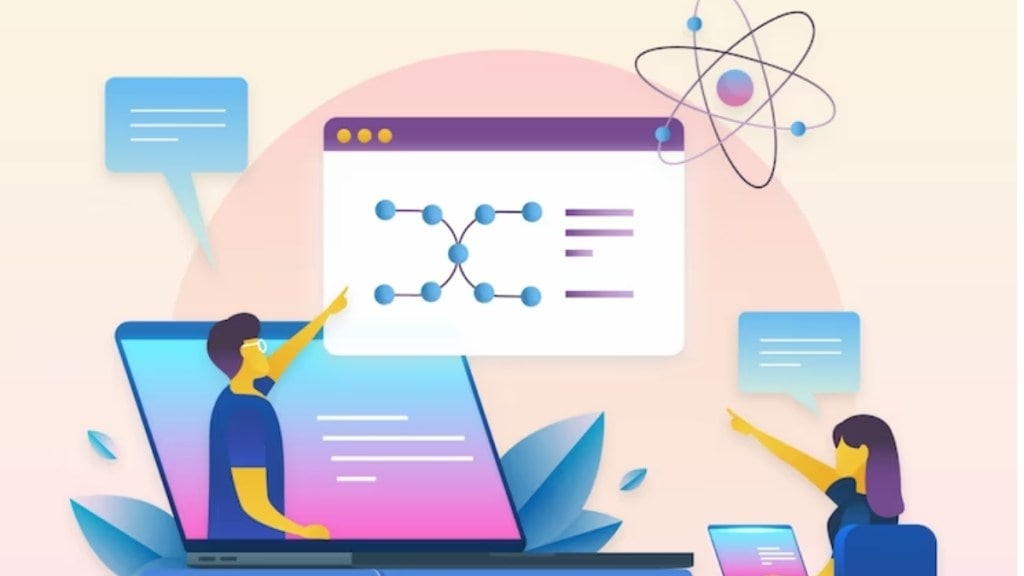By Nishant Rajawat
The ed-tech industry has undergone a remarkable transformation, thanks to the evolution of learners and technology. In the past, students would embark on arduous journeys to reside with their gurus in the traditional gurukul method of teaching, seeking to acquire knowledge and skills. However, the landscape has shifted dramatically, bringing us to a point where a learner in a remote corner of India can access the teachings of a professor from Harvard University. This remarkable change can be attributed to several factors, including widespread digitization, the advent of the internet, advancements in computing technology, and the availability of personal devices.
Phase 1: From Traditional Classroom to Smart Classroom
The traditional classroom, with its reliance on chalkboards and lectures, offered a limited and one-sided approach to learning. However, the emergence of technology sparked a transition to smart classrooms, where educators began incorporating tools like overhead projectors, displays, and computers for educational purposes. This marked an important recognition of the potential of ed-tech. Interactive whiteboards also made their way into classrooms, enhancing the learning experience. However, these advancements still fell short of delivering a seamless learning journey both inside and outside the classroom, as evidenced during the recent pandemic. Additionally, Learning Management Systems (LMS) came into the picture, allowing teachers to share course materials with students. However, it’s important to note that LMS platforms primarily serve as content sharing platforms rather than comprehensive teaching and learning improvement platforms.
Phase 2: Era is Smart Classroom is over: AI finally knocks on the classroom door
AI has emerged as the game-changer, tailoring education to the unique needs of individual learners. The emphasis expanded beyond the curriculum, aiming to improve overall student development.
Continuous Assessment through Formative Exams
In the past, exams were typically conducted on a quarterly basis, leaving educators and parents waiting for months to gauge a student’s understanding of concepts. However, with the advancements in ed-tech, schools now employ formative exams. These assessments allow teachers to test student comprehension after the completion of each topic, providing timely feedback and enabling personalized learning paths. Students can receive immediate guidance and support, ensuring a deeper understanding of the material and promoting continuous improvement.
Real-time Parental Involvement
Gone are the days when parents relied solely on occasional parent-teacher meetings (PTMs) to gain insights into their child’s academic performance. ed-tech has facilitated a paradigm shift, allowing parents to be actively involved in their child’s daily learning progress. Parents now have access to real-time updates on their child’s assignments, grades, and overall performance. This increased transparency fosters a stronger partnership between parents, students, and educators, promoting a collaborative approach to education.
From Passive Teaching to Mentorship
Traditionally, teachers adopted a one-sided, passive mode of teaching, delivering lectures and relying on textbooks. However, ed-tech has transformed the role of teachers into mentors and facilitators. Visual and collaborative methods are now employed to engage students actively in the learning process. Interactive multimedia resources, virtual simulations, and gamified learning experiences have become integral parts of classroom instruction, enhancing student participation and understanding. By embracing these innovative tools, teachers can guide and empower students to explore and develop critical thinking skills.
Reducing Manual Work and Assisted Teaching
Teachers were once burdened with extensive manual tasks, such as grading papers and creating lesson plans, leaving limited time for student interaction. However, ed-tech has automated several administrative and repetitive tasks, freeing up valuable time for teachers to focus on what matters most—interacting with students. AI-powered tools assist in grading assessments, providing instant feedback, and analyzing student performance. This technology-driven support allows teachers to personalize instruction, identify areas of improvement, and provide targeted interventions, ultimately enhancing the overall learning experience.
Constant Support through AI Tutors
In the past, students relied solely on their teachers for academic support. However, the integration of AI technology in ed-tech has introduced a new dimension of constant support through AI tutors. These virtual assistants provide personalized guidance and assistance, catering to individual learning styles and pacing. AI tutors can adapt to the unique needs of each student, offering additional explanations, practice exercises, and adaptive feedback. This continuous support empowers students to take ownership of their learning journey and fosters self-directed learning skills.
AI technology and tools such as BrightClass, ClassDojo, Nearpod, and others have played a pivotal role in enabling personalized learning in schools and educational institutions. These innovative solutions have harnessed the power of artificial intelligence to deliver tailored educational experiences to students.
Conclusion
The ed-tech industry has come a long way in the past 20 years, evolving from traditional classrooms to connected learning experiences. The integration of technology, internet connectivity, and AI has revolutionized education, providing personalized learning, holistic development, and improved outcomes for students. As we move forward, the future of ed-tech holds even greater potential, promising to shape the education landscape in ways we have yet to imagine. Embracing these transformative technologies will empower educators, students, and parents to embrace a new era of learning and unlock endless possibilities for education worldwide.
The author is founder of BrightClass. Views are personal.


